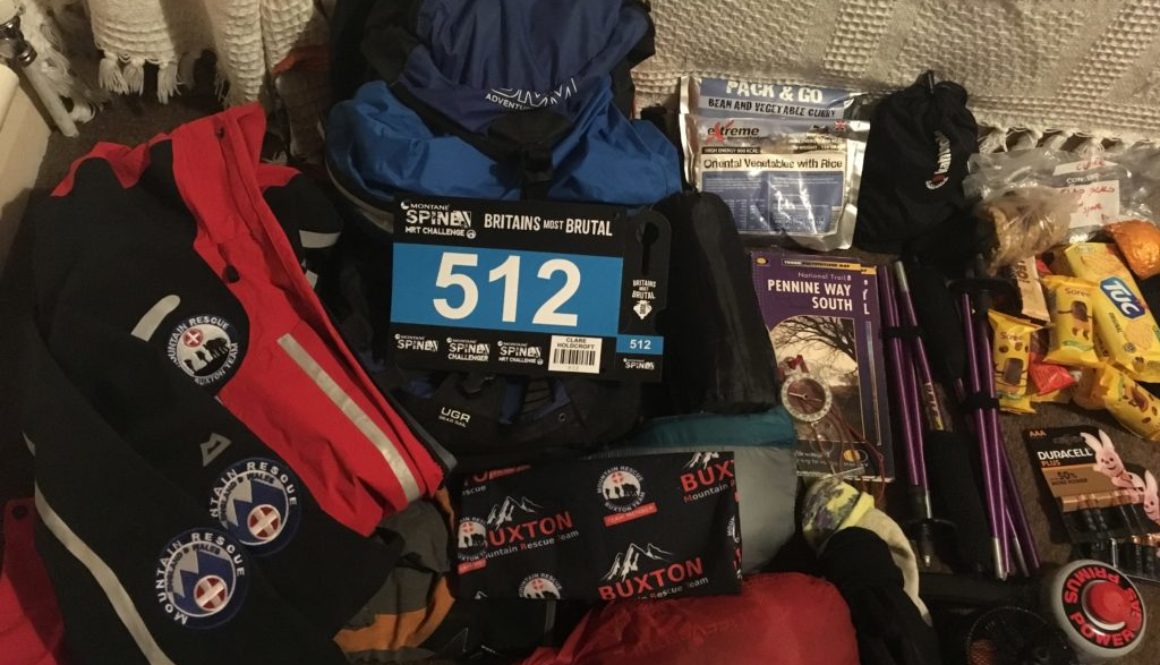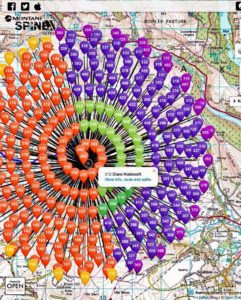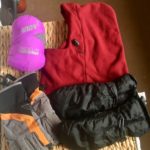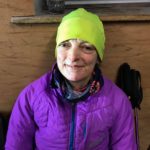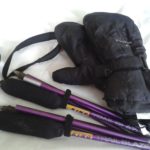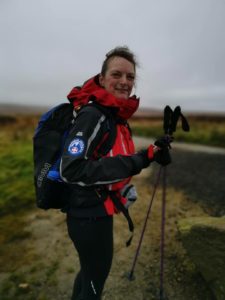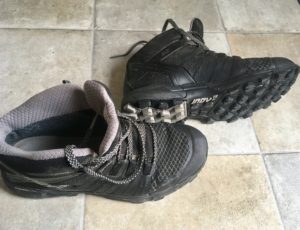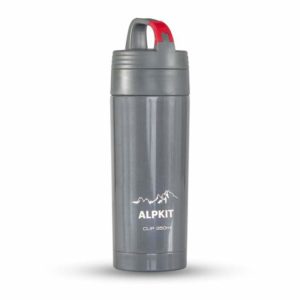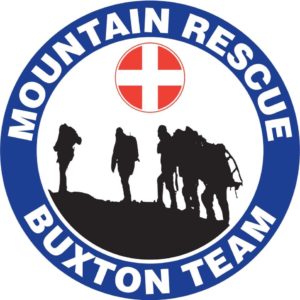Spine Challenger Top Tips
The Spine Race, Spine Challenger and Spine MRT Challenge is a winter adventure along the Pennine Way. The conditions are usually wild. It’s often windy, snowy or rainy, sometimes all three! What’s more with it being set in winter the nights are long and the daylight hours are short. There’s a high level of attrition with often over 50% of the field retiring along the way. To get to the end requires good preparation and self-management skills. Having completed the Spine Challenger previously, getting to 200 miles on the Spine Race a few years ago and finishing the MRT Challenge, I thought I’d share a few Spine top tips that helped me to reach the finish line of the MRT Challenge this year.
1. Develop strategies to cope with mental fatigue
The mental challenge is probably as tough or perhaps even tougher than the physical challenge. There are sections of the event that can seem to drag on and take forever. Or maybe you’ve been on your own for hours on end. It’s during these long unforgiving sections that you can start to think negative thoughts. It’s important to have a strategy to be able to cope. I usually give my tracker a name. This time his name was Bob. He’s that silent, strong friend who’s looking out for you!
Focus on breaking the event down into manageable chunks rather than the journey as a whole. Getting to the next checkpoint or looking forward to the next stop and having something delicious to eat. Splitting it into sections helps to maintain the motivation and having something yummy to eat is something to look forward to!
Focus on positive thoughts. Think how happy you’ll be when you get to the next stop. Have a mantra or a phrase you can repeat to yourself to keep focused and motivated. Take in all the views around you, when it’s daylight anyway, and enjoy your surroundings.
2. Stay warm and dry
This will help mentally too if you are battling the elements and can stay warm. Getting cold may develop into a negative spiral. I had three layering system of headgear, which worked a treat. I started off with no hat, but I pulled my hood up over Kinder when the weather got gnarly. This progressed to wearing a thin beanie under the hood. When the conditions got really wild, my pièce de resistànce, was a fleecy balaclava. It cocooned my head and neck like a warm, snuggly comfort blanket, and covered the gap between my buff and hat. In the worst rain and wind, I pulled the hood tight on my waterproof jacket to protect my face from the elements, which felt reassuring warm.
I like to be prepared so carry an extra layer. I’m nesh and feel the cold easily. I wore a base-layer and lightweight fleece pullover under my waterproof jacket and although I was warm going up Jacob’s Ladder on Kinder, was happy that I did later on. I carried with me two extra layers, a Rab Primaloft jacket and an Inov-8 primaloft smock. Primaloft is ideal as it’s inevitable there’ll be some seepage from the rain, so it retains its thermal capability when wet.
The bad weather often catches people out and causes many runners to retire. If you know you’re a middle-of-the-pack racer and won’t be travelling that fast, it’s worth taking an extra layer as it may make all the difference between finishing or not.
A lightweight waterproof just won’t cut the mustard on a race like the Spine unless you’re one of the front runners. A slightly thicker waterproof will have better thermal capacity and is more robust. This time I wore my Mountain Equipment Kongur MRT Goretex jacket, which is standard team issue. It’s a sturdy, heavier weight jacket and was a perfect choice as I didn’t do that much running so didn’t get too hot, and I did say I felt the cold!
3. Protect your feet.
There’s a lot of gritstone and usually mud along the Pennine Way. The combination is lethal as when the mud gets into your shoes it becomes very abrasive with the gritstone particles and can destroy your feet.
To protect my feet, I wore Inov-8 Roclite Goretex boots to help keep any water out and chose to wear a full length walking gaitor over the top to keep the mud and other bits out. Over the top of my gaiters, I wore my waterproof over-trousers from Wessenden. I pulled these tight around the ankles to give another layer of protection.
The combination worked well for me. My toes were kept warm by the Goretex boots and although my feet still got wet, which I was expecting, the gaiters kept the mud away from my socks. I changed my socks twice, smothering my feet with Vaseline at the beginning and at the checkpoint at Hebden Hay. Thankfully, I didn’t get any blisters.
4. Have access to a hot drink
I bought a last minute purchase of a small clip flask from Alpkit. It was that last minute, I bought it on my way to registration! This proved invaluable as I could carry around a hot drink. I didn’t need to risk the chill of drinking cold water and it therefore helped me to stay hydrated. It slotted into the side pocket of my rucksack easily so I could grab it really quickly. I found that hot water worked the best in the end rather than tea.
5. Keep a supply of plastic bags and use dry bags.
Your kit will inevitably get wet when the weather turns wild. It’s worth carrying a couple of spare zip lock bags. This will keep any wet kit you’re carrying away from your dry kit you may have in your rucksack. Extra plastic bin liners and carrier bags are useful in your drop bag too.
I stowed away my sleeping bag inside my bivi bag, which was then inside the sleeping bag stuff sack. To ensure it was kept dry, I stashed it inside a small dry bag. I then packed it inside a larger heavier weight dry bag that lined the whole of my rucksack for double protection. My spare, dry clothes were also placed inside a second dry bag. This kept everything dry that needed to be as the rain did slightly penetrate the large dry bag, but not the second.
6. Recce bits
Having done the Challenger previously I was quite familiar with the route. However, I did still struggle in the dark and bad weather conditions to find the path that led down to the M62 bridge. What’s obvious in the day light sometimes is just not obvious in the dark!
If time is short before the race, it is worthwhile being selective and identifying what are considered the trickiest sections and would be most beneficial to recce. Try to work out where you’re likely to be when it’s dark, although that may be easier said than done! The best bits of the route are not necessarily the most difficult to navigate, I find it’s generally the field sections that are the most confusing as you can’t see where the next stile or gate is when it’s dark or claggy.
-
The section from Charlestown just outside Hebden Bridge to just before Slack where you leave the Pennine Way to reach checkpoint 1. This is when you’re likely to be tired as you’re approaching the CP. It will be dark by this point too. The section initially winds its way steeply up narrow, cobbled alleyways where you could mistakenly think you’re trespassing in someone’s garden.
-
From Cowling over the fields to Lothersdale
-
From Thornton-in-Craven, over more fields, along the canal and crossing more fields before reaching the village of Gargrave.

